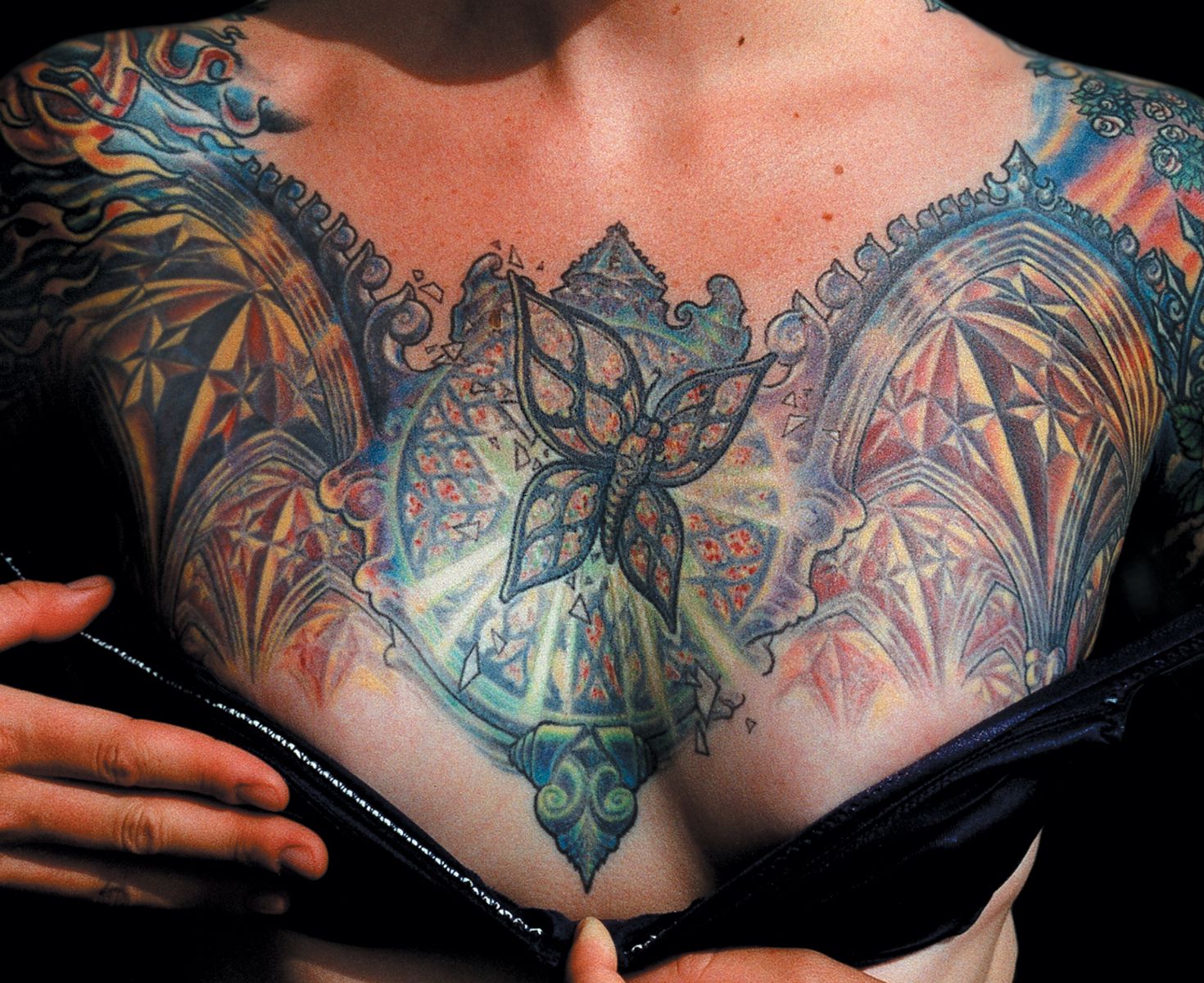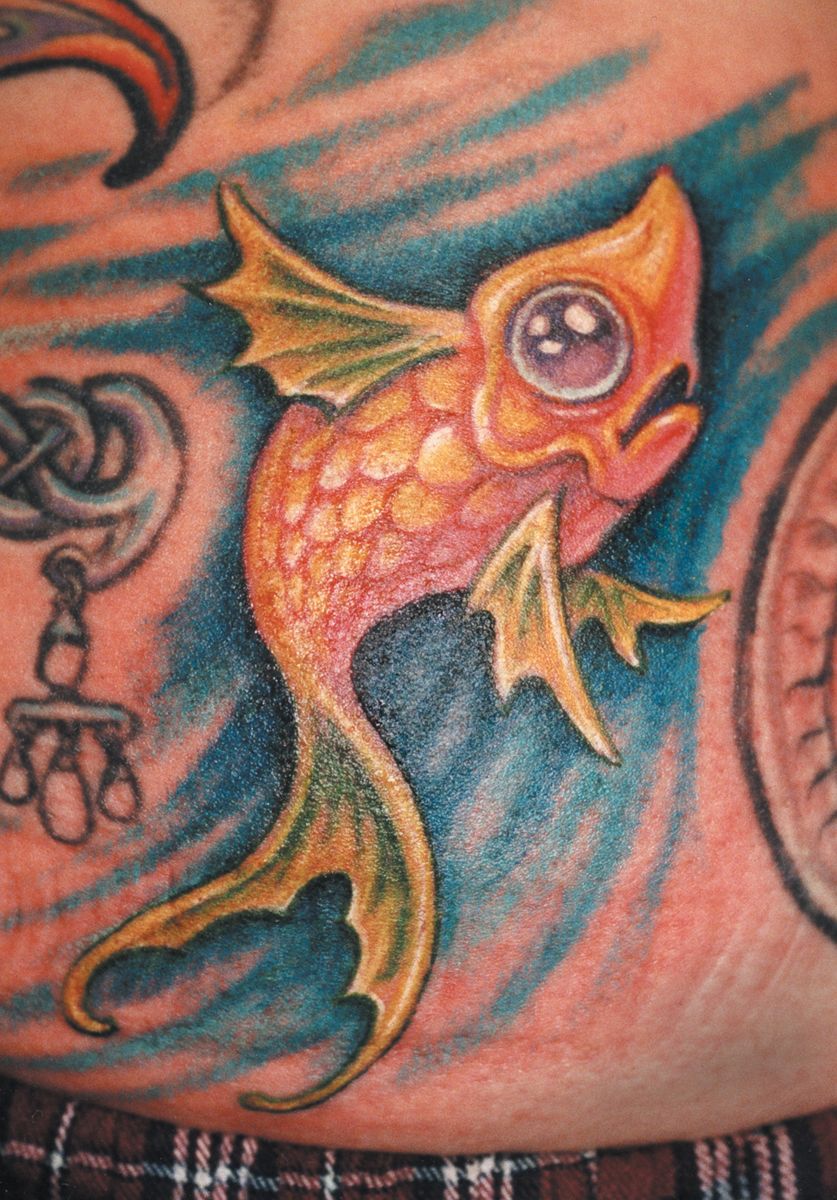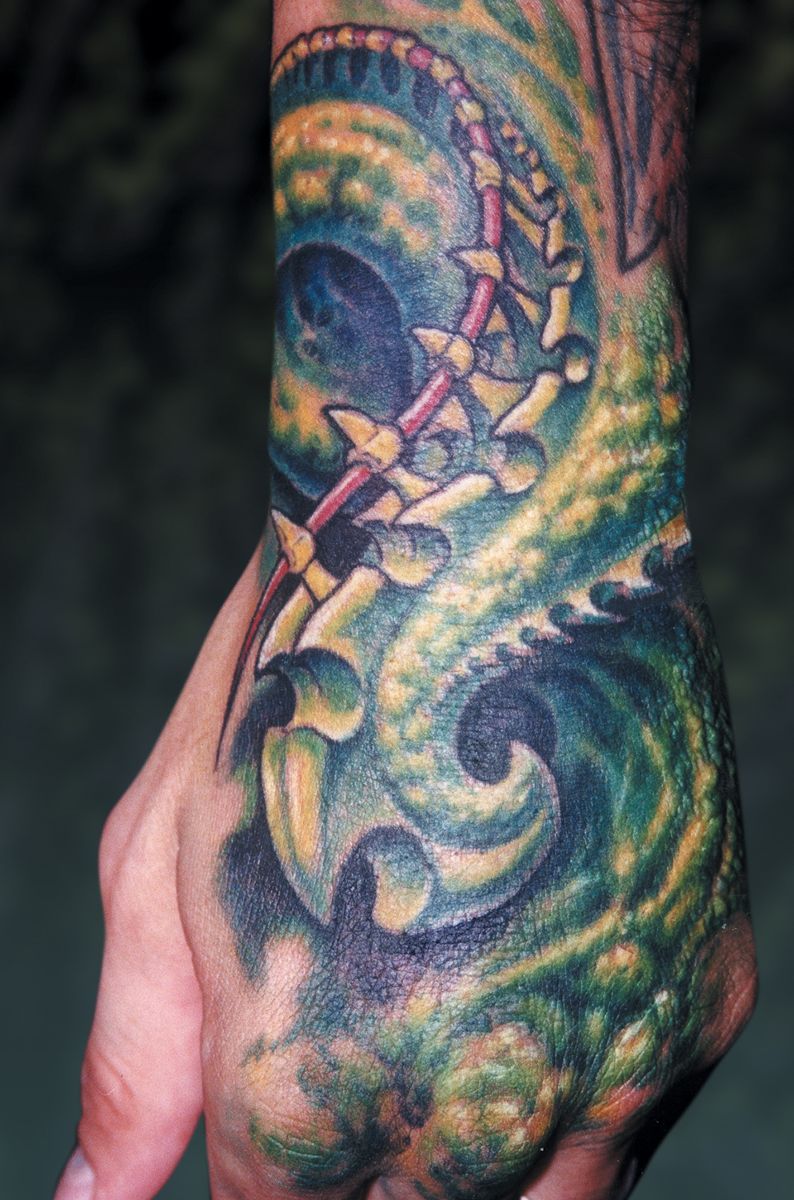
In Fig. 30a we have a more complex pos-on-neg relationship, where the butterfly is done in darker tones, silhouetting it against the stained glass and light rays behind it. There is no color in the background immediately behind the butterfly, which would confuse the pos-on-neg relationship and make it hard to read; instead, we let the background colors get softer and drop out to skin and white around the edge of the butterfly. No dark colors or black are used in the window area, allowing those dark tones in the butterfly to leap out. To create further separation, we’ve added light rays shining from behind the butterfly, which creates a luminous layer between the bold contrasting foreground shape and the softer window area behind it. The limited contrast of the window keeps this complex design from becoming crowded and busy.

Negative on positive relationships are just as strong and clear as pos-on-neg ones, although with different effect and feeling. A neg-on-pos foreground shape will jump forward from its darker background in a way that is often more effective in creating an illusion of depth than a pos-on-neg relationship. Fig. 30b shows a simple example of the most basic kind of neg-on-pos relationship, where the foreground character is done entirely in soft colors, making it easy for it to pop forward from the deeper background. Dark and medium blues are used in the background to push the fish forward; enough color is used in the background to give it a feeling of depth, while enough skin is pulled through the background to give it some motion and avoid the dense “bruise effect”. Instead of lining the details inside the fish in black, which would have compromised the strong neg-on-pos relationship, these details were outlined with color, then reinforced using a liner and deeper color after most of the coloring was finished. Selective use of black in the eye and mouth makes these features pop out.
In Fig. 30c we have a clear and simple example of neg-on-pos, with heavy shadows pushing the hook forward and making it clearly readable; details within this shape are kept simple and light in order to not compete with the strength of its neg-on-pos relationship. For added readability, a bold black outline ensures the clarity in any areas where the background isn’t substantially darker than the foreground.

Join the discussion in the forum.